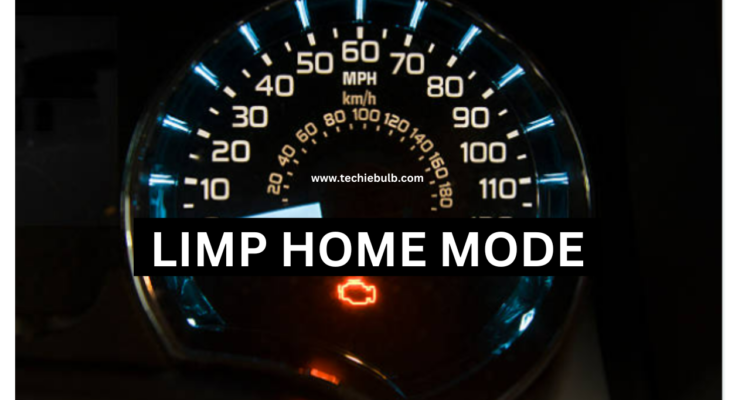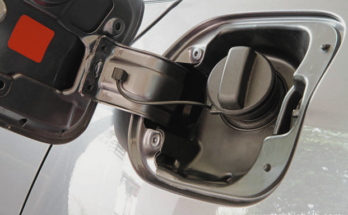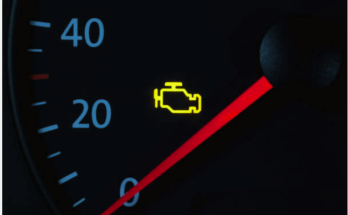Limp home mode is a term that can make any driver’s heart skip a beat. It plays a very crucial role in the complex world of modern auto technology.
Limp home mode isn’t just another dashboard light to be ignored; it’s a vital safety feature designed to protect your engine and transmission from potential harm in the event of a malfunction.
It’s like a safety net, ensuring that you can still make it to your destination safely, albeit with reduced performance.
But what exactly triggers limp home mode, and how does it work? The causes behind the activation of limp home mode and its functioning often puzzle drivers when they encounter this situation. That’s where our detailed guide steps in to provide clarity.
What is the Limp Home Mode?
Limp home mode or Limp Mode is a protective mechanism embedded within modern vehicles, activated when the onboard computer detects a fault that could potentially harm the engine or transmission.
When Limp Home mode is triggered, this mode limits the vehicle’s performance to a safe level, allowing the driver to continue operating the vehicle and reach a designated location for repairs. While the reduction in power may be noticeable, it serves as a preventive measure to avoid further damage to critical components.
Common triggers for limp home mode include sensor malfunctions, transmission problems, or other critical component failures within the vehicle’s drivetrain. Upon entering the limp home mode, drivers may notice warning lights illuminated on the dashboard, signaling the need for attention.
Understanding Limp Home Mode is essential for drivers to react appropriately when faced with its activation. Upon noticing any warning lights or indicators on the dashboard, drivers should pull over to a safe location and assess the situation.
Restarting the vehicle after a brief period may sometimes reset the system and temporarily alleviate the issue. However, if the problem persists, seeking professional assistance is crucial to diagnose and address the underlying cause effectively.
Preventive maintenance plays a significant role in minimizing the likelihood of Limp Home Mode activation. Regularly scheduled maintenance, including fluid checks, sensor inspections, and adherence to manufacturer recommendations, can help identify potential issues before they escalate.
How do I fix Limp Home Mode?
When Limp Home Mode is activated, LHM reduces engine power and vehicle speed to a limited safe level, allowing the driver to safely “limp” the vehicle home or to a repair facility.
However, resolving the underlying issue triggering LHM is essential to restore normal vehicle operation and prevent further damage. Here’s a comprehensive guide to diagnosing and fixing Limp Home Mode:
LHM is typically activated when the engine control unit (ECU) detects a critical fault in one or more components of the engine, transmission, or emissions systems. This could include issues such as a malfunctioning sensor, low fluid levels, or mechanical failures.
Check Engine Light: The first step in diagnosing Limp Home Mode is to check for the presence of the check engine light (CEL) on the dashboard. If the CEL is illuminated, it indicates that the ECU has detected a fault and stored diagnostic trouble codes (DTCs) which can provide valuable clues about the underlying problem.
Retrieve Diagnostic Trouble Codes (DTCs): Use an OBD-II scanner to retrieve the stored DTCs from the vehicle’s ECU. These codes will help pinpoint the specific component or system that is malfunctioning, guiding the diagnostic process.
Inspect Fluid Levels: Ensure that all essential fluids, including engine oil, transmission fluid, coolant, and brake fluid, are at the correct levels. Low fluid levels can trigger LHM and may indicate leaks or other issues that need to be addressed.
Inspect Electrical Connections: Check for loose, corroded, or damaged electrical connections throughout the vehicle, especially those related to sensors, wiring harnesses, and the battery. Clean and tighten connections as necessary to ensure proper electrical continuity.
Replace Faulty Sensors: Sensors such as the throttle position sensor (TPS), mass airflow sensor (MAF), or oxygen sensors (O2) can malfunction and trigger LHM. If any sensors are found to be faulty during diagnostics, replace them with OEM or high-quality aftermarket replacements.
Check Air Intake System: Inspect the air intake system for obstructions, leaks, or damage. A clogged air filter, damaged intake hose, or intake manifold leaks can disrupt airflow and cause engine performance issues leading to LHM activation.
Inspect Exhaust System: Check the exhaust system for leaks, damage, or a malfunctioning catalytic converter. A restricted exhaust system can create excessive backpressure, affecting engine performance and triggering LHM.
Test the Throttle Body: Clean the throttle body and inspect it for any signs of wear or malfunction. A dirty or faulty throttle body can disrupt the air-fuel mixture, leading to poor engine performance and LHM activation.
Reset ECU: In some cases, resetting the ECU can temporarily resolve LHM issues. Disconnect the battery for a few minutes, then reconnect it to reset the ECU and clear stored fault codes. However, if the underlying problem persists, LHM may reoccur.
Professional Diagnosis: If the issue persists after performing these steps, or if you’re unsure about any aspect of the diagnosis or repair process, it’s recommended to seek assistance from a qualified mechanic or automotive technician. They have the expertise and specialized equipment to perform in-depth diagnostics and identify the root cause of the problem accurately.
Conclusion
Understanding Limp Home Mode (LHM) is crucial for any vehicle owner or driver. This safety feature, activated when the car’s Engine Control Unit (ECU) detects a significant fault, serves as a protective measure to prevent further damage to vital components like the engine and transmission. While LHM may restrict engine power and limit speed, it plays a vital role in ensuring the safety of both the vehicle and its occupants. However, it’s essential not to overlook the underlying issue triggering LHM. Prompt diagnosis and repair by a qualified mechanic are key to restoring normal vehicle operation and preventing potential long-term damage. By staying informed about LHM and addressing issues promptly, drivers can maintain the reliability and safety of their vehicles on the road.




